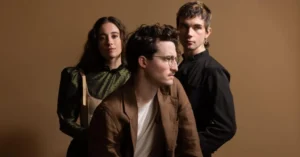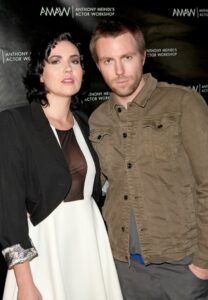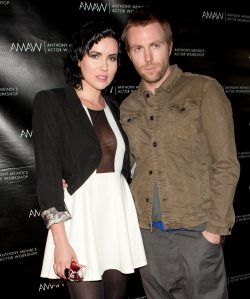How creatives are surviving the 2025 slowdown


Image licensed via Adobe Stock
Things are tough for many creatives right now. We share some of the ways they’re fighting back.
Let’s not beat around the bush. The creative industry is facing its most challenging period since the 2008 financial crisis. In the wake of Chancellor Rachel Reeves’ recent spending review, economic uncertainty looms large, with higher taxes on the horizon and business confidence at a concerning low. While a focus on growth dominates the political rhetoric, the reality for freelancers, small studios and creative professionals tells a starkly different story.
A confluence of economic pressures and rapid advancements in AI has created the perfect storm. As a result, companies are increasingly adopting “do more with less” philosophies, leading to role cuts, project delays and hiring freezes. And it’s the self-employed and small creative businesses who feel the impact first and most acutely.
“I’ve been doing this 15 years, and I’ve never seen a wave go across like this,” says illustrator Matt Saunders, who works with clients including Nissan, Airbnb and Disney. “Every person I’ve spoken to, across a wide range of industries, is saying things are weird: FX, animation, illustration, design, editing, filmmaking, advertising, publishing, even the news business.”
Three major production companies have gone into liquidation this year alone, while countless freelancers report their worst dry spells in years. Lee-May Lim, a freelance book designer, describes experiencing “four straight months of nothing”, the worst period in her eight-year freelance career.
“I’ve entered the stage of mild desperation now and have started considering applying for jobs,” she reveals. “However, I can’t face going back to commuting three hours a day again. I did that for 13 years, and being an unpaid carer for my disabled son as well, it’s too much to consider. I’m considering leaving the creative industry completely if things don’t pick up.”
Beyond the financial implications, the current slowdown is taking a significant emotional and psychological toll on creative workers. The uncertainty has compelled many to confront fundamental questions about their careers and the industry’s future.
Take illustrator and picture book maker Francesca Grech. “I’ve been struggling with this lately and have decided to stop chasing too much for the time being, as it was taking its toll on my mental health,” she reveals.
“Too many rejections and too much time spent making a portfolio and CV all shiny. I’m now taking the time to review my work and understand what direction I want to take my business in the future, seeing what needs improving and just generally creating the work I really want to be making.”
New strategies in response
In response to these unprecedented challenges, creative professionals are developing a range of new approaches. Some are finding opportunities in unexpected places. Illustrator and artist Rachael Presky notes: “What’s worked really well are murals; for me, there seems to be more work there, which I guess is a job that AI can’t really replicate. I’ve moved house recently, and getting to know local councils and businesses gave me quite a lot of commissions.”
Matthew Gallagher, meanwhile, has pivoted towards product creation. “I understand that it will be harder to survive solely on the design consultancy model since so many companies are moving to AI tools and all-in-one solutions like Canva,” he reasons. “So I’ve been creating my own robust families of fonts to license and sell, in addition to the design services I provide.”
Geographic diversification has also become crucial. As Adrian Carroll, creative director at D8 Studio notes: “The UK is definitely more cautious at the moment. We’ve been fortunate in that we now have clients based all over the world; it’s never been easier to work with overseas clients. Post-lockdown, people are so used to working remotely.”
Wayne Deakin, global principal at Wolff Olins, echoes this sentiment, encouraging UK creatives to leverage the nation’s design reputation. “Look beyond your local patch and your standard approach,” he urges. “British design is world-class, so take a wider export lens to your business. Social media and the internet mean that anyone can be your client today, and different regions have varying levels of growth.
“Take an export mentality, and then also widen your offerings,” he adds. “Design is a skill. It’s problem-solving, not just visual expression, that can be applied to many surfaces, places or problems. Go for it.”
Community and relationship building have also emerged as critical survival strategies. Creative director Paul Leon emphasises the importance of access and networking. “My advice is what I tell myself: be respectful, courteous and positive,” he says. “No one wants to be around negativity or envy. Be useful. Be kind. Mean it. After 35 years, I know access is hard-won in this industry, but that’s how we give ourselves a shot at winning the work.”
Similarly, creatives are evolving their approach to client relationships. As Mike Hindle from Clearcut Derby notes: “Repeat customers can often see you through a dry spell of new enquiries. So, it’s important to ensure that everyone you work with wants to hire you again. Usually, all this takes is exceptional communication and going above and beyond their expectations.”
Navigating the AI revolution
If the financial situation wasn’t already bad enough, it has been magnified out of all proportion for many by the rise of artificial intelligence. “AI has changed everything, and it’ll keep changing how we work,” predicts creative director Dionysis Livanis. “I see two clear paths emerging: you can either be the one who embraces AI to work faster, more efficiently, and build systems that make you indispensable, or you can be the one fighting against it and potentially getting left behind.”
Others, meanwhile, stress what artificial intelligence is unable to do. “I think in a world of AI, our humanity is a premium,” argues story coach and strategist Baishali Johal. “Because the more advanced, perfect—and sterile—that technology gets, the more humans will crave authentic human connection and creativity.”
Illustrator Aron Leah is singing from the same hymn sheet. “I’ve started leaning into the parts of my work that make it unmistakably human-made,” she says. “That’s meant drawing with a point of view, showing process, telling stories with intent. The more everything starts to look the same, the more a thoughtful, hand-drawn illustration stands out.
“I’m also trying to stay visible without burning out. Sharing work, writing honestly on LinkedIn, using AI for admin but keeping the human bit in the craft itself. And I’ve started reaching out to brands that align with my style, rather than waiting for perfect briefs to come in.”
The emphasis on authenticity and human touch is becoming increasingly important as AI-generated content floods the market. Graphic designer and illustrator Lilian Orukwo outlines her strategy here. “What’s worked best for me is creating from a place of cultural truth tied to daily rituals and storytelling. I share behind-the-scenes glimpses of my process and prioritise slow, intentional collaborations.”
Some professionals are finding ways to integrate AI tools strategically while maintaining their creative integrity. Cal Thomson from Dead Pixel Films reflects a popular opinion when he says: “I don’t think it’ll replace everyone; I think it’ll just help increase our output. There are more screens than ever, with a greater demand for content to display on them. AI used correctly by creative teams will hopefully streamline that and increase output.”
And Tom Hadley, founder of Exodus 25, adds: “It would help if more would push back against the narrative that the future of creativity is AI. Creatives would help themselves to make the case that it is not.”
Building resilience for the future
As the creative industry navigates this challenging period, resilience will be key. As graphic designer and illustrator Nvard Yerkanian says: “After more than 10 years of freelancing and running my solo studio, I’ve learned how important it is to plan for these slower seasons. Having a bit of runway means I don’t have to panic. And when you don’t panic, you avoid making decisions you’ll regret, like slashing your rates or saying yes to projects that don’t align.”
The importance of community support, too, cannot be overstated. As the industry faces unprecedented challenges, creatives are finding strength in shared experiences and mutual support.
For many, this period of uncertainty has provided an opportunity for reflection and strategic planning. Rather than simply waiting for conditions to improve, successful creatives are using the quieter periods to refine their offerings, strengthen their networks, and explore new opportunities.
The current slowdown, while challenging, is also revealing the resilience and adaptability that has always characterised the creative industry. Those who emerge successfully from this period will likely be those who have embraced change while staying true to their creative values, built diverse income streams, and maintained strong connections within their communities.
As strategy consultant Stephanie Ressort notes: “The most important thing for me has been to recognise that my struggles are not the sign of personal failings on my part. Too often, as a society, we blame the individual and protect the system, with all its issues.”
To sum up, while the challenges facing creatives in 2025 are significant, they are not insurmountable. Through strategic adaptation, community support, and a focus on distinctly human creativity, we will weather this storm as we have many others before.





